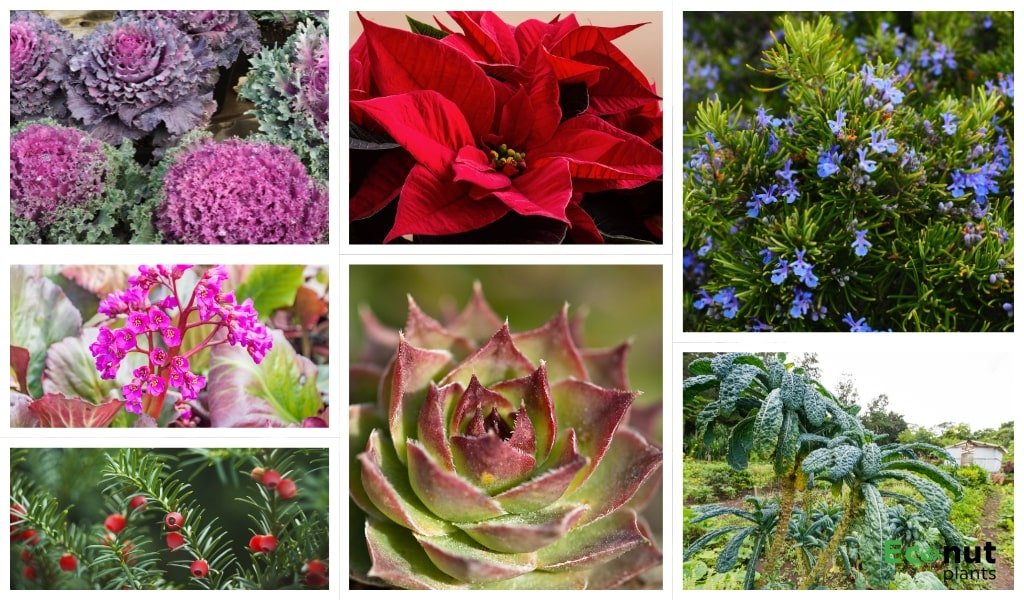Winter is on its way, but there’s nothing to worry about. Beautiful foliage and striking blossoms don’t have to be sacrificed by gardeners simply because winter is here. You may still enjoy container plantings around your garden, which provide curb appeal even when the temperature drops below zero.
Regardless of your hardiness zone; you have a wide range of alternatives to select from. This post includes 27 perfect plants for winter container gardens.
1. Rosemary

Botanical Name: Salvia rosmarinus
Height: 3 feet
Hardiness Zones: 5-7
A great plant for winter containers is rosemary. This evergreen plant smells wonderful and has festive needles. You can prune them into different shapes to fit your style. Alternatively, a topiary one on a long, narrow trunk is also an option.
With the topiaries freeing up the bottom of the pot to fill with all your favourite winter plants, they look especially good in a winter container. Plus, you can chop off a portion of the plant for your Thanksgiving meal.
2. Dinosaur Kale
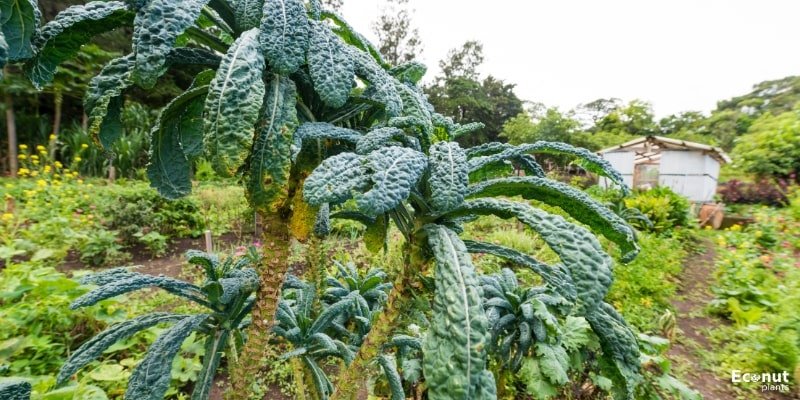
Botanical Name: Salvia rosmarinus
Height: 6 feet
Hardiness Zones: 2-11
This cool-weather vegetable, dinosaur kale is ideal. It’s gorgeous in addition to being tasty and nourishing. With its very dark green, almost purple foliage, this tall, leafy green is quite striking. With a somewhat ancient appearance, it is ruffled and wrinkled.
A seasonal arrangement would benefit greatly from its inclusion. In a tiny arrangement, I would use it as the focal point plant and surround it with a few smaller flowers and plants. Another way I would use it would be as a filler plant in a pot under a big shrub or center plant. Using it in your cooking after trimming is the greatest part.
3. Juncus ‘Curly Wurly’
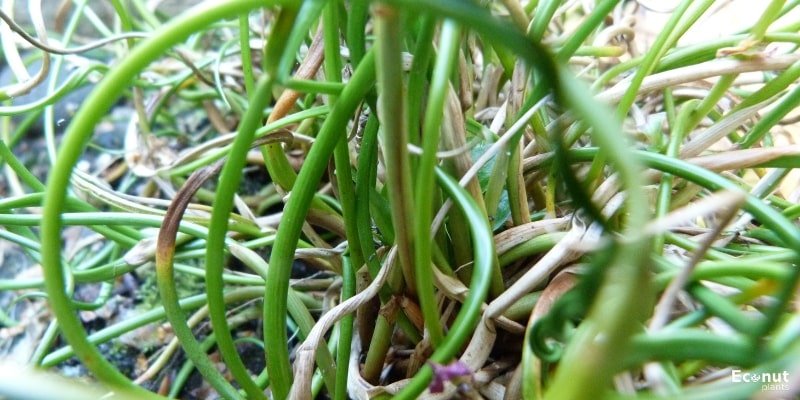
Botanical Name: Juncus decipiens ‘Curly-wurly’
Height: 12-18 inches tall
Hardiness Zones: 5-9
Curly Wurly, or Juncus, is a wonderful grass to use as the focal point or center of your container. It has strong, upward-pointing grass spike tendrils, but some of them have interesting corkscrew twists that provide interest.
My favourite way to arrange these is in the middle of a pot with some plain flowers underneath, like pansies or violas. You might plant this on a table in a smaller planter.
4. Evergreen Boughs
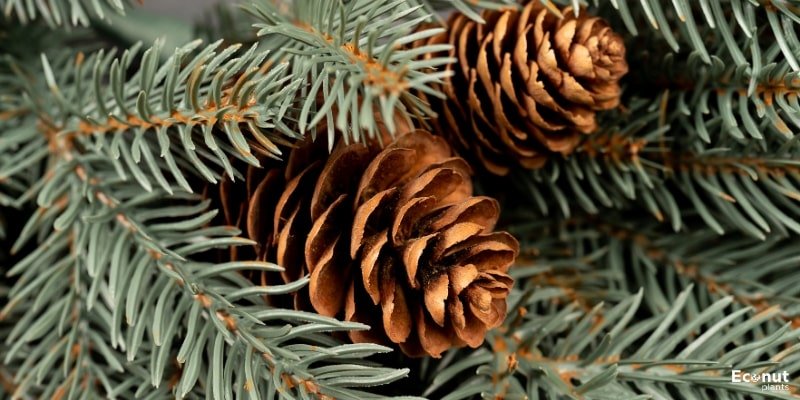
Botanical Name: –
Height: 15 to 20 feet tall
Hardiness Zones: 5-9
I wanted to offer this plant as a possibility for winter pots, even though it’s not strictly a winter plant. If you live in an area where plants are too cold or snowy, or if you simply want a different look, consider filling a pot with evergreen boughs.
My favourites are silver fir, pine, and cedar. For the pot’s center, I normally cut off a few branches of brilliant red dogwood. Both curly willow and birch poles look fantastic. After that, I plant the boughs in the ground. If you reside in a cold region, you can freeze the soil in the winter by watering it.
5. Dwarf Alberta Spruce
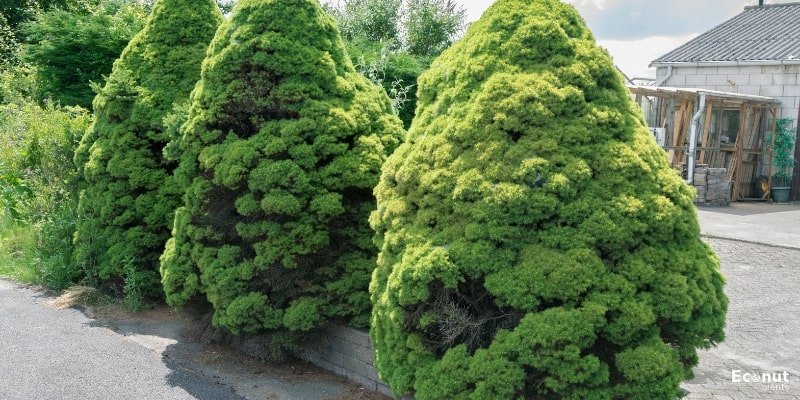
Botanical Name: Picea glauca ‘Conica’
Height: 8 feet tall
Hardiness Zones: 3-6
This is not just a book I’m adding to my list because I live in Alberta. In pots, this small spruce looks fantastic. They are an excellent alternative for containers because it takes years for them to reach their final size. At the nursery, sturdy spruces are available in reasonably small sizes.
These trees grow very neatly and tightly. It will arrange the needles into a flawless pyramid. For a winter container, dwarf Alberta spruce is the ideal mid-range option. It can also be decked out with lights, balls, garland, and other decorations to resemble a tiny Christmas tree. It’s a fantastic Christmas plant.
6. Lobelia
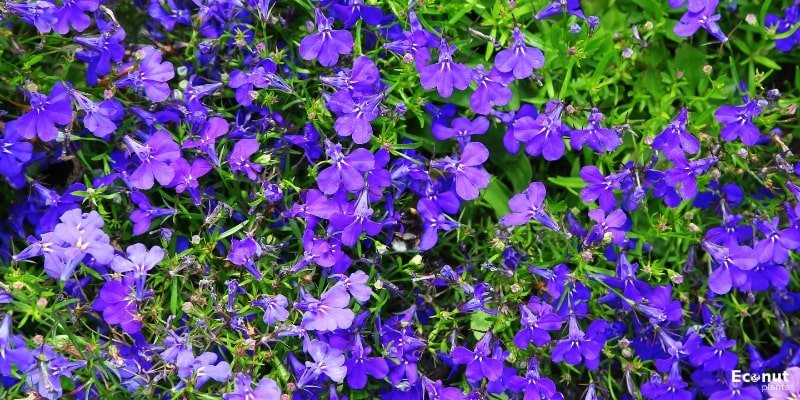
Botanical Name: Lobelia
Height: 6-9 inches tall
Hardiness Zones: 9-11
Tiny blue blooms of lobelia, a charming annual plant, spill over or cover containers. I regretfully don’t grow as much Lobelia these days. My hometown’s summers have just gotten too hot, in my opinion, and the plants wither too soon.
Lobelia is a fantastic winter plant, but if you live somewhere with mild winters, They do best in the cooler months. Plant lobelia in a container alongside other cool-season plants that enjoy water because they don’t like to dry out.
7. Sedum
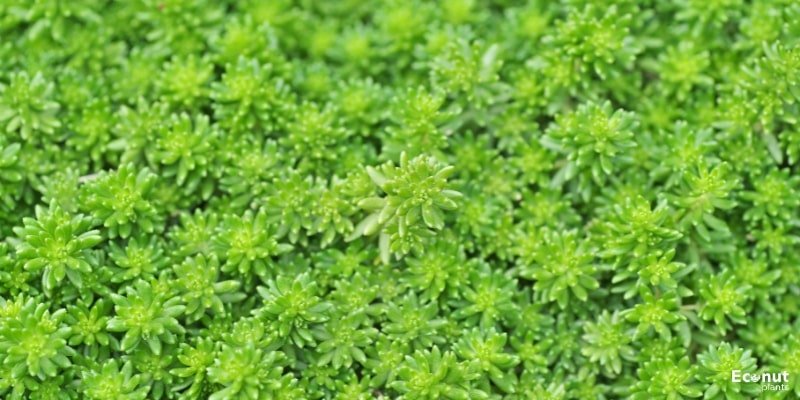
Botanical Name: Sedum
Height: 6-9 inches tall
Hardiness Zones: 3-11
Again, I was unable to decide on a single variety for this plant. Sedum comes in a wide variety of forms. A portion of them develop into upright plants. Some sneak and follow. They have a wide variety of hues and textures.
A lovely upright species that works well as a filler plant in a winter pot is called “Autumn Joy.” It features clusters of fall-baked, cauliflower-like blossoms that flush red. A vibrant green creeping sedum species that can trail down winter pots is called “Angelina.”
Red-trailing “Dragon’s Blood” sedum complements green plants in a container well, such as cedars and spruces.
8. Hens and Chicks
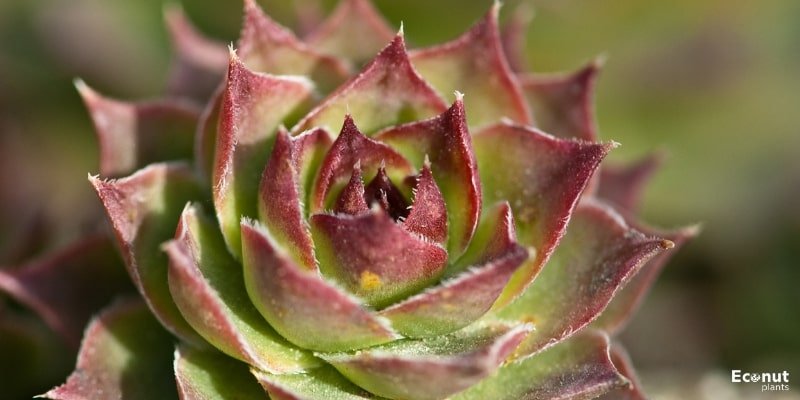
Botanical Name: Sempervivum
Height: 6–12 inches tall
Hardiness Zones: 3-8
Hens and chicks come in a wide variety. They are all members of the sempervivum plant family. These hardy little succulents are wonderful complements to containers throughout the winter.
Tucked beneath an evergreen tree or shrub, they make an excellent filler plant. The ones that have a distinct colour to them are my favourites. For example, “Red Lion” has crimson rosettes with a hint of green.
Hens and chicks are excellent if you like to rotate containers periodically because of their shallow root system and ease of moving from the garden into pots and back again.
9. Coral Bells
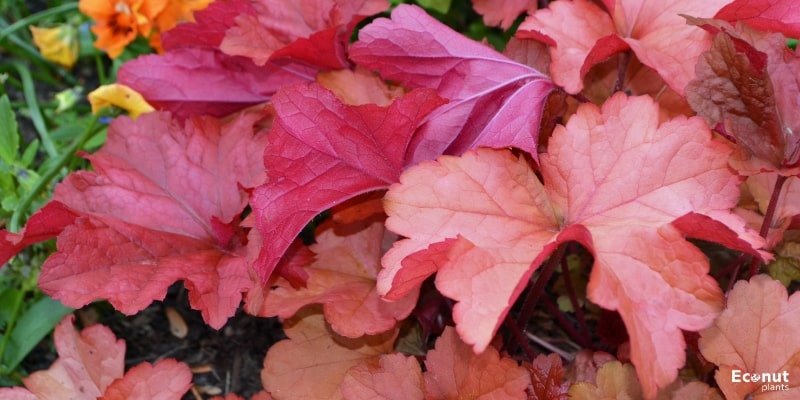
Botanical Name: Heuchera
Height: 6-16 inches tall
Hardiness Zones: 4-9
A lovely tiny leaf filler plant for winter plants is the coral bell. This perennial is evergreen and suitable for many hardiness zones. They work well in winter arrangements for almost any gardener.
Winter is when they won’t be blossoming. Their ruffled leaves and colourful foliage, however, provide ample visual appeal. They are available in purple, yellow, green, and caramel. Some have their leaves frosted in silver, while others have distinct leaf characteristics.
10. Slowmound Mugo Pine
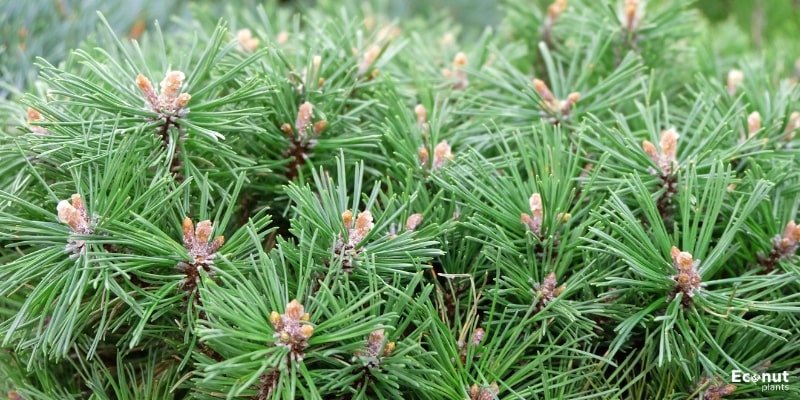
Botanical Name: Pinus mugo ‘Slowmound’
Height: 3 ft. tall
Hardiness Zones: 2-7
One of my favourite evergreen shrubs is the mugo pine. They can, however, get rather big and stringy. For this reason, I chose to grow the dwarf mugo pine type.
This slow-growing pine maintains its compact shape. A charming, tiny mound of piney leaves is formed by dwarf mugo pine. A smaller one might be tucked in and used as a filler plant in a large container arrangement, while a larger one could be used as a thriller plant in a container.
11. Dwarf English Boxwood
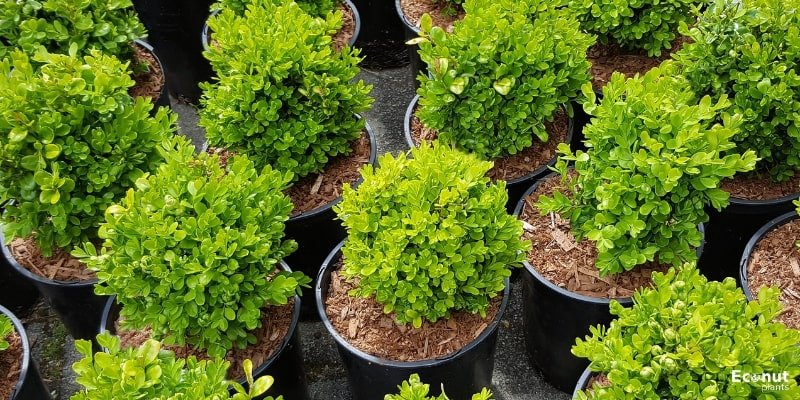
Botanical Name: Buxus sempervirens ‘Suffruticosa’
Height: 1 to 2 ft. tall
Hardiness Zones: 6-9
Boxwood’s dense, evergreen foliage is especially beautiful in the winter. In containers, it also looks fantastic. I adore several boxwood kinds, but the miniature English is my favourite for pots. It is ideal for containers because it only gets 2–4″ tall and wide.
If you want a more formal appearance, you can also trim them into flawless spheres. Solitary, spherical dwarf English boxwood in a pot exudes an air of celebration and refinement. Buying a phony Boxwood sphere is an additional alternative. It’s difficult to distinguish between inferior and superior ones if you locate one.
12. Winter Heather
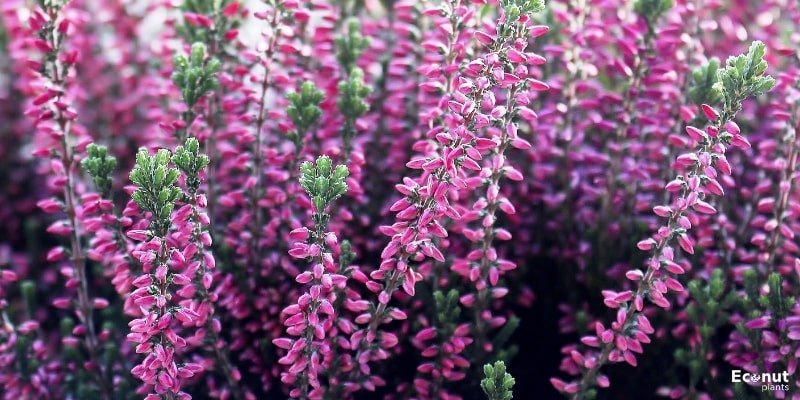
Botanical Name: Erica carnea
Height: 20 and 50 cm tall
Hardiness Zones: 5-7
A fantastic textural feature for a winter container is winter heather. In addition, it has a faint colour and blossoms. In the autumn and winter, garden centers always carry this low-growing plant. It is a low-growing plant that blooms tiny white or pink flowers and has tendrils of branches spreading upward.
Winter heather is a great filler plant in a winter planter, in my opinion. It would look fantastic beneath a big evergreen tree, like a little blue spruce.
13. Pansies
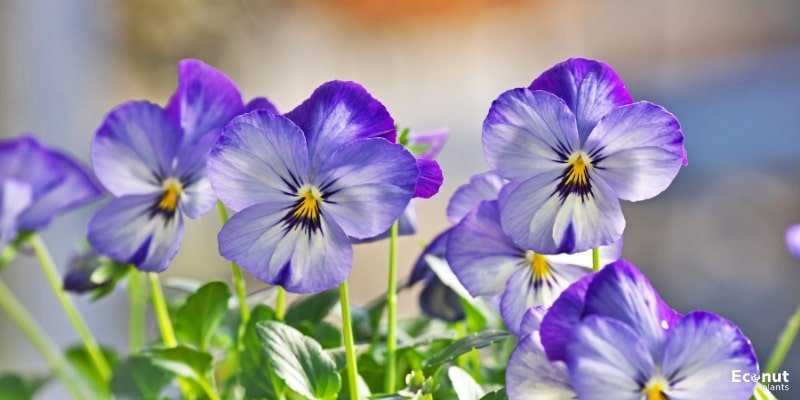
Botanical Name: Viola tricolor var. hortensis
Height: 6 to 12 inches
Hardiness Zones: 7-10
Do pansies have any limitations? With their ability to withstand the last burst of cold, they make the ideal springtime bloom. They’re the ideal bloom for winter, too.
A light sprinkling of glittering snow makes pansies seem magnificent. As low as 23 °F (-5 °C) is nothing for them to bear. For a winter display, they are an excellent small filler plant to use. They are undoubtedly already your go-to wintertime flower if you live in a warm climate. Their optimum temperature is chilly.
14. Holly ‘Touch of Gold’
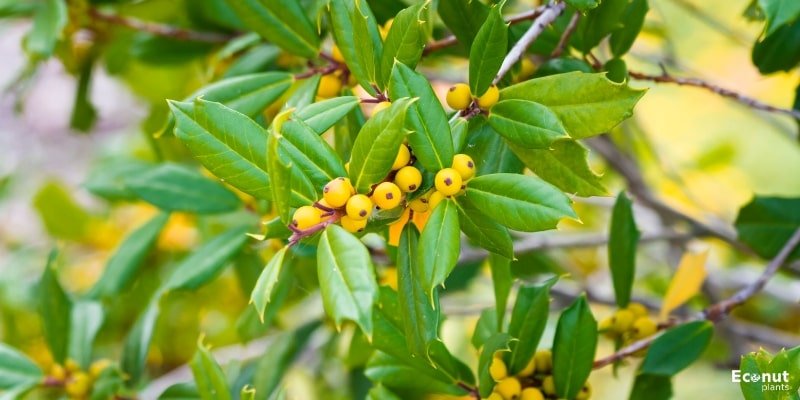
Botanical Name: Ilex crenata ‘Adorned’
Height: 2 ft.
Hardiness Zones: 6-9
Holly comes in a wide range of types that look fantastic in containers. However, “Touch of Gold” caught my attention because it’s the ideal small shrub to add some colour to a container. Or it can independently fill a container. Its mounding appearance and leaf texture are reminiscent of those of boxwood. The leaf of this evergreen shrub is a vivid yellow.
You can mix this holly with many different plants. It looks great next to plants with vivid orange or red foliage. For a rich, cozy pairing, try it next to a “Southern Comfort” coral bell.
15. Yew
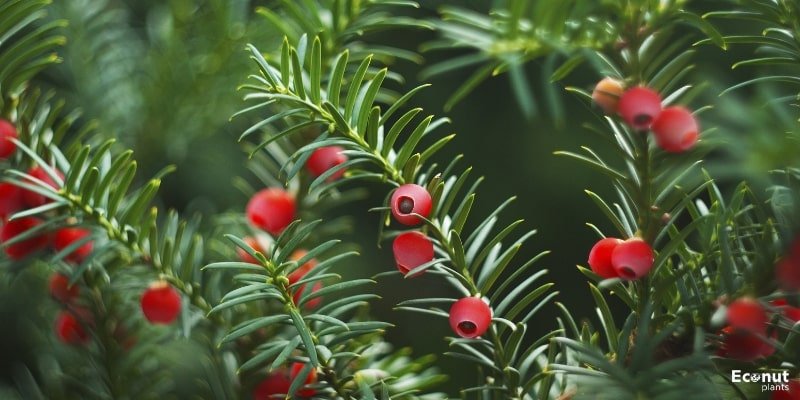
Botanical Name: Taxus Baccata
Height: 10–20 m
Hardiness Zones: 3-8
Yews make excellent winter containers. They always look fantastic in containers. This is a fantastic way to have a formal but straightforward appearance. By the entrance door are two huge containers holding two yews. Pruning them into narrow pyramids is possible.
Yews are incredibly resilient and not overly particular. They can also endure for years in containers because they grow slowly there. Don’t focus only on the given width and height specifications. They grow much smaller in a container and take decades to mature.
16. Hardy Cyclamen
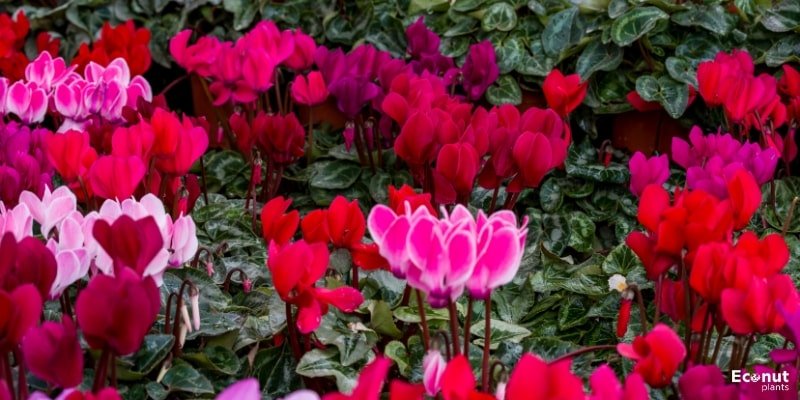
Botanical Name: Cyclamen persicum
Height: 4 – 6 inches
Hardiness Zones: 9-11
Cyclamen signals the arrival of winter in the desert. These are the ideal plants to use as winter planters. They are lovely and in bloom. Place them in containers with evergreen bushes or grasses underneath.
Even when they have completed blooming, the foliage remains visually appealing. Their leaves have a lovely heart-shaped. Once their blooming season is over, they can also be planted in the garden. Summertime is when hardy cyclamen will die back. They make wonderful houseplants if you live somewhere where you can’t cultivate them inside.
17. Adam’s Needle Yucca
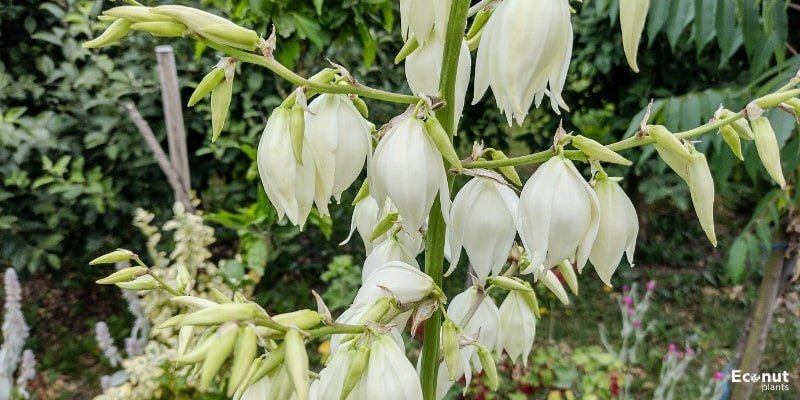
Botanical Name: Yucca filamentosa
Height: 3-4 feet
Hardiness Zones: 4-10
This hardy yucca is a wonderful way to give a winter container some structure. The evergreen plant’s towering, spiky spikes. It makes a wonderful focal point for a winter container when placed in the middle or back.
This is a very resilient cultivar that does well in subfreezing conditions. It can be stored in the container year-round as well. Seasonally, you might replace the filler plants.
Adam’s needle can be harmed by strong winds and deep snowfall. If you live in a place where there is a lot of snow, a container beneath a porch or overhang would offer some further protection.
18. Poinsettia
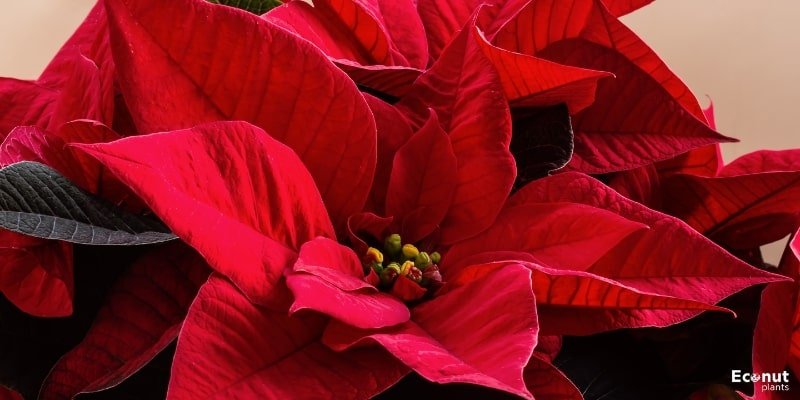
Botanical Name: Euphorbia pulcherrima
Height: 10 -12 inches
Hardiness Zones: 9-11
If you reside in a region free of frost, poinsettias are a no-brainer choice for winter containers. Acquire and arrange these vibrant plants around your assortment of winter containers. Or simply leave the larger ones alone. Their colour spectrum includes classic red, white, and pink.
They seem ideal for just tucking into pre-existing containers to provide instant holiday flair. It’s not even necessary to remove them from the pot that they were in. Remove them as the holidays are coming to an end and they start to fade.
Of course, you could spend the holidays indoors admiring these beauties if you live somewhere with bitterly cold winters.
19. Kinnikinnick
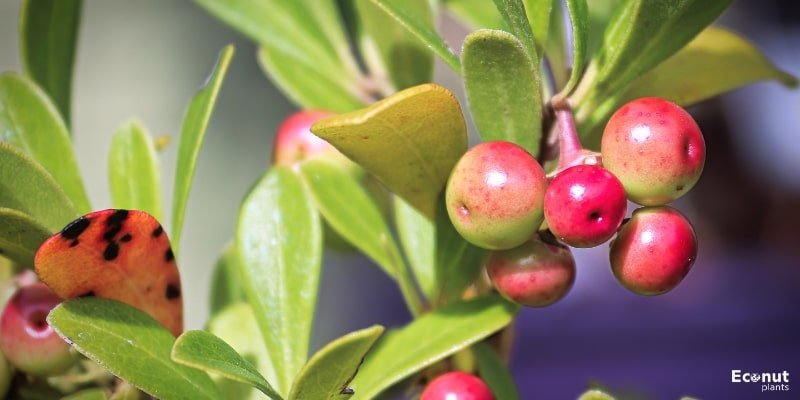
Botanical Name: Arctostaphylos uva-ursi
Height: 6-12 inches
Hardiness Zones: 2-6
Bearberry, also known as kinnikinnick, is a very resilient evergreen plant. It grows slowly, making it the ideal addition to a winter container that will overflow the sides. It can endure the winter with its vivid red berries and compact, glossy foliage.
To ensure that it has a significant effect when spilling over a winter pot, I would attempt to purchase a pretty large plant from the garden center.
20. Lemon Cypress
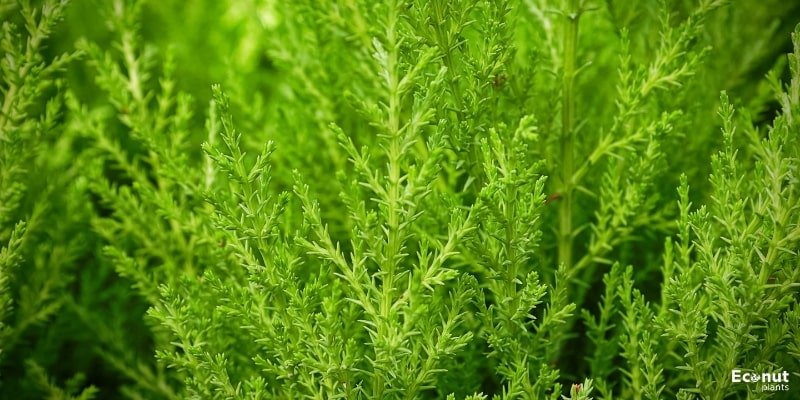
Botanical Name: Cupressus macrocarpa ‘Goldcrest’
Height: 6 feet
Hardiness Zones: 7-10
During the holidays, garden centers always carry lemon cypress. When you rub their needles, they release a perfume that is zesty and has a vibrant lemony-yellow colour.
Areas that don’t freeze during the winter are ideal for these plants. A wonderfully festive winter pot has poinsettia plants all around and a lemon cypress in the center. Lemon cypress can also be decked out with lights and ornaments to resemble a tiny Christmas tree.
21. Dogwood
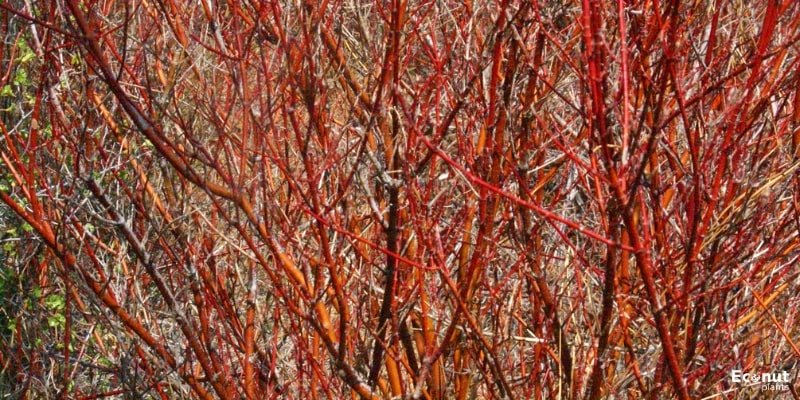
Botanical Name: Cornus Sericea
Height: 15 to 25 feet
Hardiness Zones: 3-7
Dogwoods have colourful, bare branches in the autumn, even though they are not evergreen, and eventually shed their leaves. They give containers a festive feel.
Another option is to simply cut the branches off of any dogwood that is currently in your garden and insert them into your winter container.
In the spring, your dogwood will sprout new, vibrantly coloured branches when you flush it down in your garden. Though the traditional colour of dogwoods is red, several cultivars have bright yellow stems.
22. Red Hook Sedge
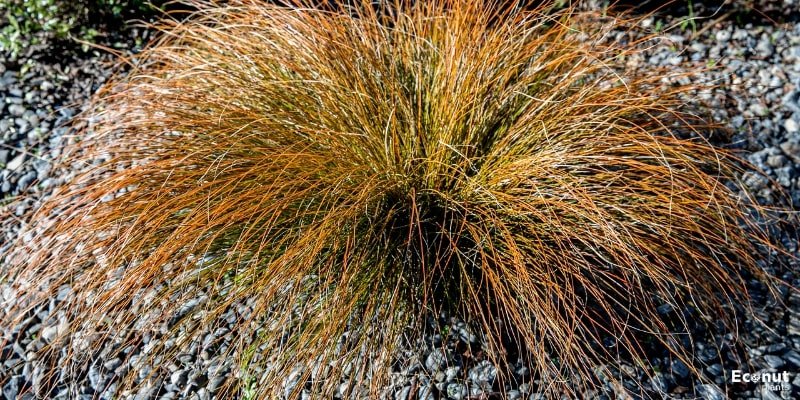
Botanical Name: Uncinia rubra
Height: 6-12 in.
Hardiness Zones: 7-10
The goal is to discover plants that provide colour through their foliage, as there aren’t many that bloom during the winter. Bright red grass called red hook sedge gives winter pots dimension and vibrancy.
For the center of a pot, it makes an excellent thriller plant. As a colour contrast to another plant, it can also be used as a filler plant.
A blue evergreen, such as a dwarf blue spruce tree or a “Wichita” juniper, would look great combined with a red hook sedge. Without any flowers, this combination offers a tonne of colour.
23. Baby Blue Spruce
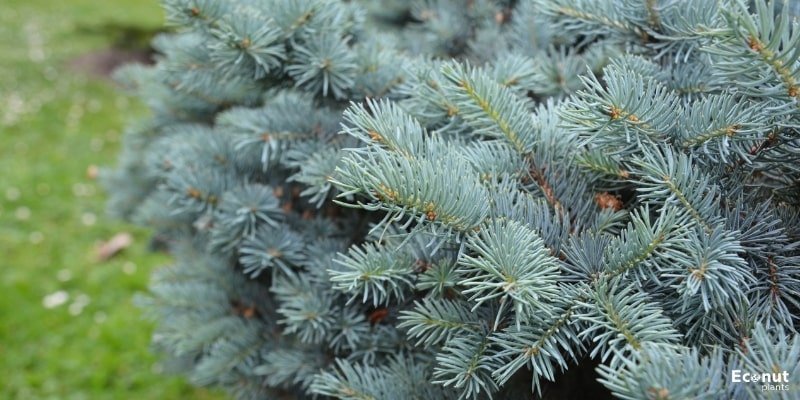
Botanical Name: Pineapple Pungens ‘Baby Blue’
Height: 15 to 20 feet
Hardiness Zones: 3-7
Any blue spruce will work in a container. The only reason “Baby Blue” is my choice is that it gets smaller as it gets bigger. A dwarf variety is what I suggest if you want a tree in a container for the long run.
The particular type won’t matter if you like to rotate your plants seasonally, though, as they won’t grow over the winter.
The blue hue and crisp texture of a blue spruce tree appeal to me. For a striking colour combination, pair with purple plants like bugleweed, hens, and chicks, or a Primo “Black Pearl” coral bell.
24. Bergenia
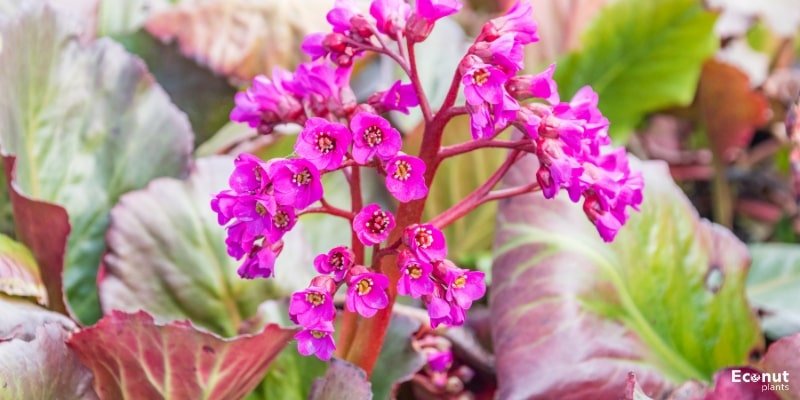
Botanical Name: Bergenia cordifolia
Height: 6 to 12 inches
Hardiness Zones: 3-8
One excellent hardy perennial is Bergenia. Its large evergreen leaves are waxy. It’s called the elephant ear by people. However, I use the scientific name to avoid misunderstandings because there are several plants with that name. You won’t be in awe of Bergenia; it’s nothing extravagant. However, it works well as a filler plant in a pot.
In containers, I prefer the smaller leaf variety. Try “Flirt” in a winter container if you want lots of layers of tiny, glossy foliage. Bergenia is an excellent choice if you’re concerned about plants surviving in pots in your area because it’s a fairly hardy perennial.
25. Ornamental Kale
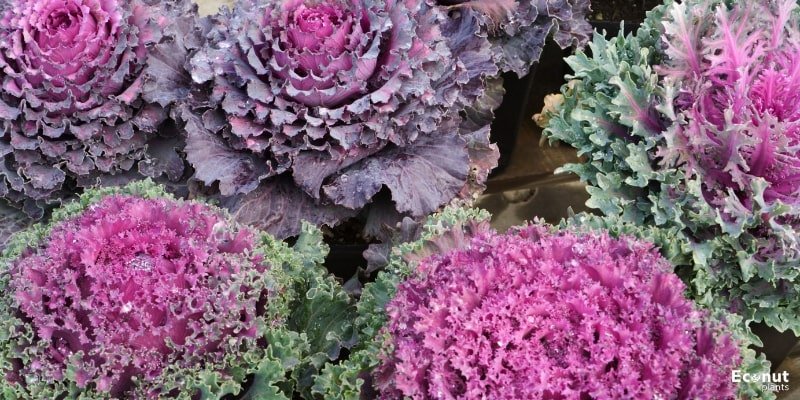
Botanical Name: Brassica oleracea
Height: 1 to 3 feet
Hardiness Zones: 2-11
A wonderful idea to liven up your winter pots is with ornamental kale. They are available in pink, purple, white, and green hues. They are colourful explosions that are spherical. I prefer to place one beneath a dramatic plant.
Merely tucked to the side. The vibrant colour of the ruffled leaves persists throughout the winter season and adds texture to a container.
Buying a little tray of them in the spring will save you money, and they are minimally maintained plants to cultivate. They do not withstand high temperatures or humidity; therefore, grow them in a cooler location.
26. Juniper
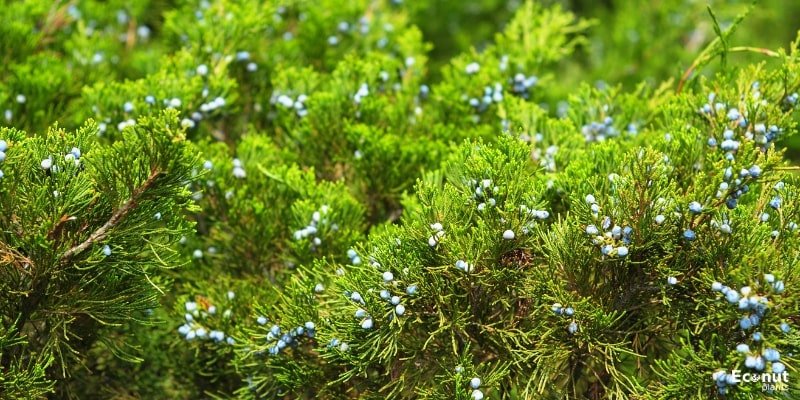
Botanical Name: Juniperus
Height: 20–40 meters
Hardiness Zones: Variety dependant
My favourite way to approach any container is with the thriller, filler, and spiller notion. Containers for the winter are no different. That implies I prefer to have one item that serves as the pot’s main attraction. To provide texture and colour, the pot should also be filled with a few plants.
A “Wichita Blue” upright juniper might make a thriller juniper. This cultivar develops in a lovely pyramid shape and has a dusty blue colour. It grows vertically. It will remain smaller if kept in a container, even if it can grow rather huge. Filler junipers are abundant. This juniper has fluffy evergreen foliage and a lovely medium-green colour. This one can grow really big as well.
27. Carex ‘Red Rooster’
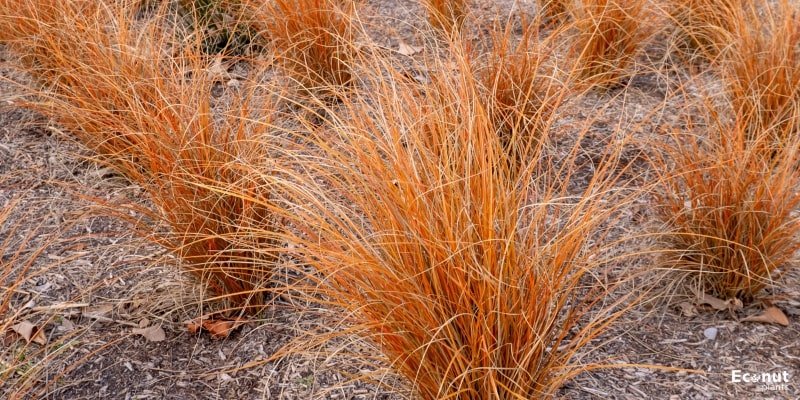
Botanical Name: Carex buchananii
Height: 2 inch tall
Hardiness Zones: 7-9
Carex grasses, in general, are excellent plants for winter containers. A cold breeze rustles the elegantly green foliage. However, “Red Rooster” is a great option for a winter container due to its small size and copper hue.
“Red Rooster” can easily go from a colourful fall planter to your winter exhibit. For a cozy autumnal vibe, pair it with ornamental gourds and rudbeckia. Next, swap out the filler for slow-growing mugo pine and warm-coloured pansies to create a wintery atmosphere.
Conclusion
When the winter months come, gardening doesn’t have to end. Having some plants in containers to enjoy over the winter months is fantastic, even though it’s pleasant for gardeners to take a break. Create visually amazing winter container crafts by experimenting and seeing what you can find locally.

